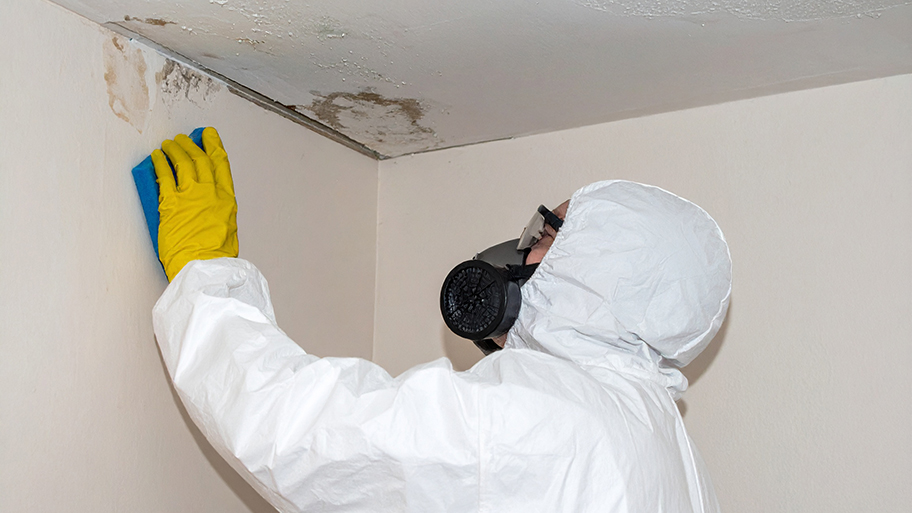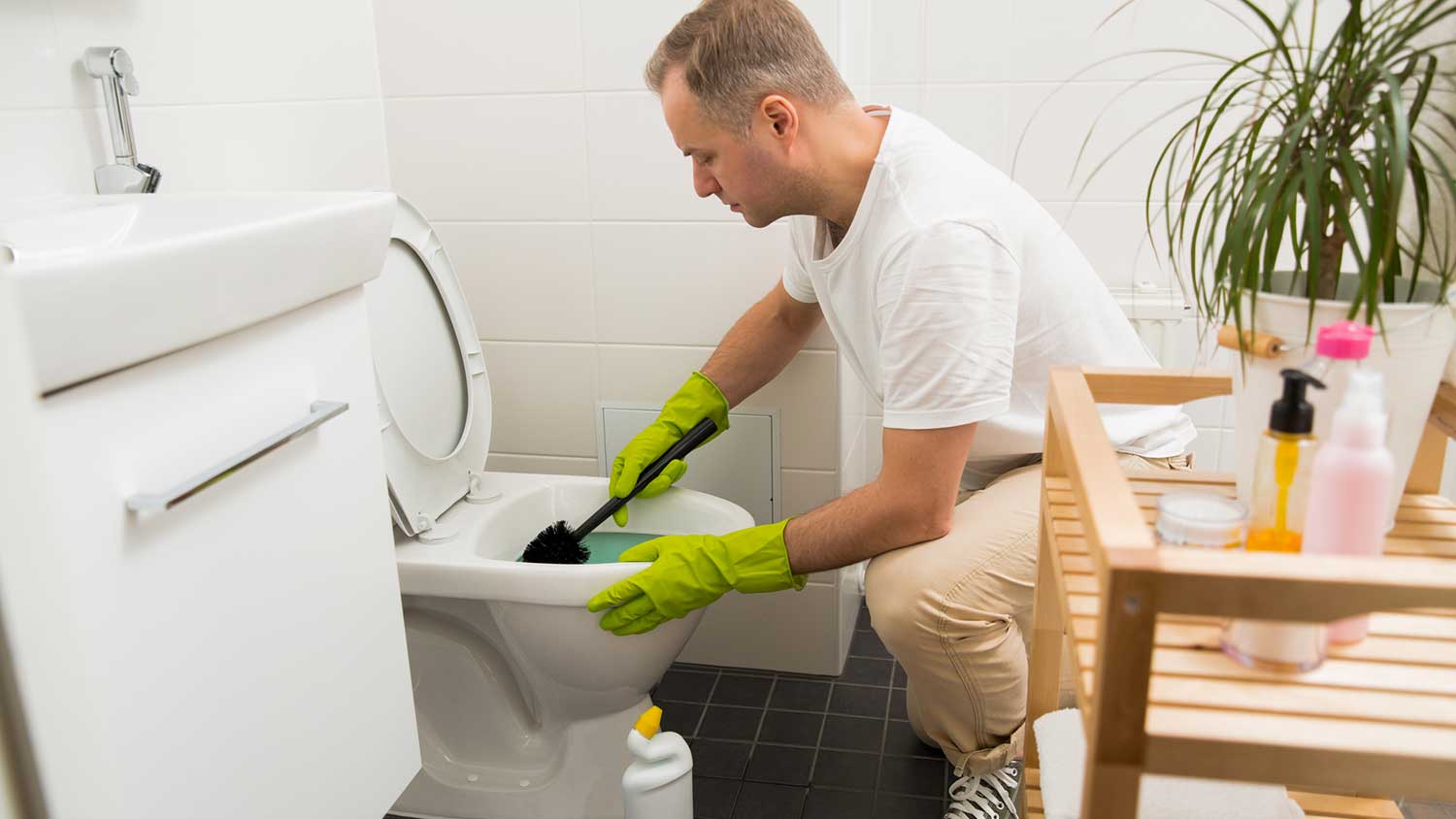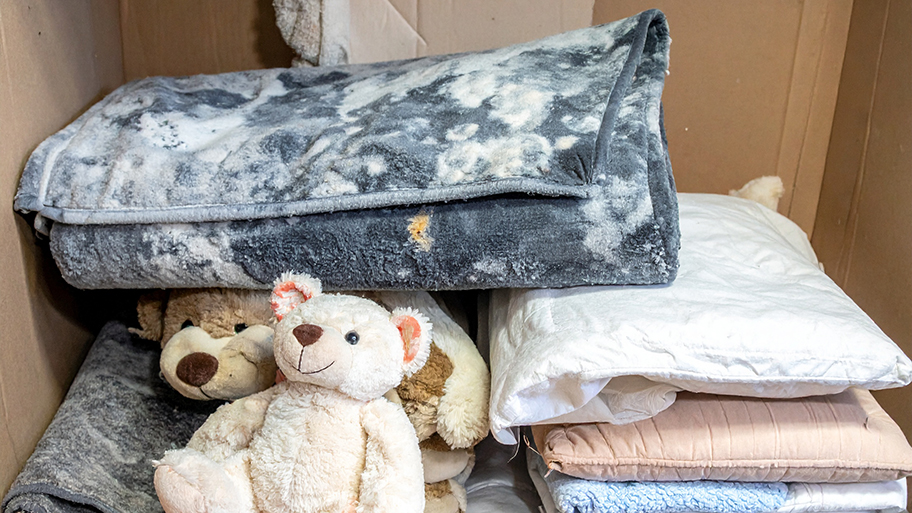
Mold remediation cost can quickly escalate. But if you have mold in your home, the cost for mold remediation is worth it.
Mold testing and remediation costs depend on your project and location. Check with a local pro for your specific job.
The average mold inspection costs $657, with typical ranges between $300 and $1,000.
Homes under 4,000 square feet generally incur inspection costs of $300 to $400, while larger homes can cost $700 to $1,000.
Mold testing, which includes air and surface samples, costs $250 to $500 to determine mold type and spore concentration.
Mold remediation can cost anywhere from $1,150 to $3,400, and extreme cases may exceed $20,000.
Inspection costs vary by mold type, with black mold inspections costing $600 to $800+, while common molds like Cladosporium cost $450 to $550.
Searching for the cost of a mold inspection can yield varied results, but whatever the cost, it’s worth it. Mold can not only damage your home, but the spores can become airborne and cause respiratory issues and allergies. On average, mold inspection costs $671 for most homeowners. This cost can range from $303 to $1,044, with the most significant price factor being the size of your home.
For a home under 4,000 square feet, you can expect to pay between $300 and $400. That price jumps to between $700 and $1,000 for a larger home. An inspection can help homeowners solve the issue before there’s a problem (that leads to a more expensive fix).
A mold inspection is when a professional examines areas of your home to confirm or rule out the presence of mold. The inspection doesn’t include treatment. There’s a difference between mold inspection, mold testing, and mold remediation. Your contractor can’t perform remediation unless they determine the extent of your mold issue and what type of mold they’re dealing with.
A mold test costs $250 to $500 and involves taking air and surface samples to find the mold species and number of spores. This helps your pro develop a remediation plan to remove the mold. For most homeowners, mold remediation costs $1,150 to $3,400—but it could cost as much as $20,000 for extensive cases.
Booking a professional mold inspection is the first step in dealing with potential mold growth. Your technician will use various tools, including moisture meters and specialized cameras, to determine the likelihood of mold growth in your home. The inspection can also tell you the likelihood of future mold problems if none currently exist. An inspection only determines whether mold is present. If so, professional testing is the next step.
Mold testing involves far more than a simple inspection. Mold testing often requires both on-location and lab testing to achieve the best results. Testing involves taking samples of existing mold growth and analyzing them to determine the type of mold, taking air samples to help determine the severity of the situation, and determining the extent of the problem. The goal of mold testing is to establish a game plan for how to proceed with mold remediation.
Mold remediation is more than simply removing the mold growth from your home. Remediation encompasses removal, treating, and eliminating the sources of the infestation. Remediation doesn't completely remove all mold and mold spores from the home. Instead, it focuses on eliminating a potentially dangerous amount of mold and establishing normal levels.
Mold remediation also includes repairing or eliminating moisture sources, creating a plan to minimize the likelihood of mold returning, and implementing the plan.
If you can smell the odor and you can’t see it, usually that is a sign of something more serious. Mold can hide behind your walls and floors and will require a professional mold remediation company to run indoor air quality tests.
You shouldn’t necessarily shy away from a high-priced inspection. Mold is tricky and hides in dark corners, cracks, and crevices. In the early stages, the problem may not even be visible to the naked eye, but a professional mold inspector will be able to do a meticulous examination. Factors that impact the total cost include:
Since some mold inspection businesses charge by the hour, it will cost more to inspect larger homes and properties. Simply put, the more area a mold inspector has to cover, the higher your bill will rise. Sometimes, only a basement or attic will need to be inspected because of obvious water damage. Other times, an inspector will need to examine the whole home.
Many mold removal businesses charge higher fees for hard-to-reach places. If a mold inspector needs to remove drywall or tile to access the area, there may be additional costs. If a mold inspector only checks obvious spots, the inspection can take as little as two hours. If they extensively check inaccessible areas, it can take as long as six hours. This dramatically changes the cost, but you can estimate based on the area.
High accessibility and visibility: Bathroom walls, kitchen walls, exposed foundation walls.
Medium accessibility and visibility: Windows, window sills, fireplaces, chimneys, enclosed attic spaces near the roof.
Low accessibility and visibility: Air ducts and vents, crawl spaces, wall cavities (particularly areas between the drywall and foundation).
If you have mold in different parts of your home, an inspector will have to take numerous samples. They also do this to differentiate between types (think: white mold vs. black mold, which is notoriously dangerous). Some mold inspection businesses require a minimum number of samples.
Some mold inspection companies charge by the service. For example, they’ll charge separate fees for a visual inspection and an air inspection. Others will charge more if they suspect black mold because it requires more protective equipment and care. Expect to spend on both sample collection and lab testing. Some different types of testing are:
Swab Test: $200 to $300. An inspector will take a surface sample from an area that either has visible mold or they suspect has mold. This method is only effective for a singular area in the house, so most homeowners also conduct an air test.
Air Test: $250 and $350. A basic air test is often included in an inspection, and can cost as much as $700 if the testing is extensive. An air test can determine the type of mold and the severity of the issue room by room (it analyzes the concentration of mold spores in the air).
HVAC Test: $50 to $75. Often, this cost is added to the cost of an air test. If it isn’t included, it’s worth adding it to any other test you’re having done, as mold can often infiltrate a home’s ventilation system.
Lab testing is important because it will determine whether or not you’re dealing with toxic mold. This will help your contractor create an effective remediation plan—if remediation is necessary. There are two types of tests—stain and mold culture—and they’re each an additional charge on top of sample collection.
For stain testing, your inspector will collect mold samples from swabs, tape, or air and put them in a plastic cassette. This cassette is treated with a stain that makes the mold spores easier to see by microscope. From there, a technician will analyze the mold. This test will cost an additional $150.
The other type of test is a mold culture test, which costs an extra $50. This test takes a mold sample and lets it run wild in a controlled environment. A lab technician then monitors the growth. If the mold doesn’t grow, you likely don’t have a problem. If the mold grows quickly, you likely need immediate remediation.
How much you pay for a mold inspection sometimes depends on the type of mold. You’ll generally spend $450 to $800 for all mold types, but certain toxic molds (like black mold) may rack up higher costs. Black mold requires a very specific, expedited process, so if you think that’s your issue, hire a black mold inspection specialist near you.
| Mold Type | Cost of Inspection |
|---|---|
| Aureobasidium | $450–$550 |
| Stachybotrys Chartarum | $600–$800+ |
| Ulocladium | $500–$600 |
| Alternaria | $450–$550 |
| Chaetomium | $450–$550 |
| Penicillium | $500–$600 |
| Serpula Lacrymans | $500–$600 |
| Trichoderma | $500–$600 |
| Cladosporium | $450–$550 |
| Fusarium | $600–$800 |
| Aspergillus | $450–$550+ |
Mold inspection will cost more if you’re dealing with black mold (known as Stachybotrys Chartarum) or molds that are difficult to identify. Here’s what you can expect to spend.
Alternaria mold includes 40 different varieties that are typically found outside in the spring and summer. These spores are most often responsible for plant damage but can also work their way into carpets, basements, attics, and showers.
This mold typically grows on painted surfaces, hard surfaces, and behind wallpaper. It often looks pink as it matures and can cause allergies.
This type of mold can be very dangerous to humans. In addition to allergy symptoms, it can cause a nail or skin infection. In rare cases, it’s been linked to brain infections, and certain species are considered carcinogenic. This mold starts out as a white fuzz but turns blue-green.
This is another type of mold included in a basic inspection. It most often hangs out in basements and HVAC systems, where it aggressively grows. It causes allergy symptoms in those affected by mold allergies.
This mold includes 250 different mold varieties that start out as a white fuzz and eventually turn black, brown, green, or yellow. Aspergillus thrives in lower humidity compared to most molds but can cause the respiratory illness Aspergillosis, so remediation is important. Since it’s sometimes difficult to find, costs can rise.
This is another blue-green mold that’s often quickly identified. It tends to crop up in areas with water damage and can cause an allergic reaction.
This type of mold grows rapidly in wood, plants, and soil. In your home, you’ll find it on anything that has a high cellulose content (like fabric) or in your HVAC system.
This dark-colored mold often crops up around windows and doors or in kitchens and basements—basically wherever there’s dampness and condensation. It’s often confused for black mold, but typically only causes allergies.
Serpula Lacrymans is a fast-spreading mold often responsible for dry rot in wood—exactly the kind of thing you don’t want to get in your walls. You’ll also find it in masonry, plaster, and dry mortar.
In humans, fusarium can cause a localized infection (typically in the nails or cornea) or a systemic infection (once it gets into the bloodstream). Most often, Fusarium is the result of a water leak.
This is what’s commonly called black mold—a dangerous, fast-growing mold that causes respiratory problems, infections, and neurological issues. Black mold requires immediate removal. You’ll need to hire a black mold specialist—and costs could rise depending on your home.
Mold is easier to remove when it isn’t widespread, so catching it early is key. Here are situations that warrant a mold inspection—whether you see mold or not.
After Water Damage or Flooding: Moisture leads to mold. If your home experienced water damage, there’s a chance mold moved in—especially in areas without access to proper ventilation, like behind latex paint and inside walls or ceilings.
Buying or Selling a Home: Though there’s no federal law against selling a house with mold, a mold infestation can impact the value of your home. Before you buy or sell a home, get a mold inspection to make sure an expensive problem isn’t hiding in your walls.
Ceiling or Wall Damage or Warping: If you notice any damage or warping along your ceiling and walls, mold could be the culprit. Certain types of mold feed on wood and drywall and can cause serious issues if unmitigated.

In the early stages, you may not notice any visible signs of a mold problem. Mold spores are microscopic, but rest assured, the problem usually grows and eventually shows itself. Here are red flags:
Visible mold
Discolored surfaces (unusual black, white, or pastel-colored stains)
Persistent cough
Unexplained allergy symptoms
Musty odor
Warped walls or ceilings
Cracked paint
Rust
Water damage
If you see—or feel—any signs of mold, it’s time to call a mold inspector near you.
Hiring a local mold inspection pro may cost more upfront, but it ensures a thorough, accurate assessment of your home’s air quality and potential mold problems. Professionals have the tools, training, and expertise to detect hidden mold and moisture issues, helping you prevent health risks and costly damage.
Mold inspection is a specialized project that requires technical knowledge and safety precautions. Here are some of the top reasons to work with a pro:
Mold inspectors can identify hidden mold, moisture sources, and areas at high risk for growth.
They use professional testing equipment, such as moisture meters and air sampling devices, to provide accurate results.
Working with a pro ensures you receive a detailed report and recommendations for remediation if needed.
Professionals help pinpoint problems before they become extensive, saving time and repair costs.
Bundling mold inspection with remediation or water damage restoration can provide a comprehensive solution.
If you want to take on some prep work yourself, these tasks can help reduce inspection time and costs:
Clear furniture, clutter, and personal items from areas where inspection will occur.
Note any visible mold, musty odors, or water leaks to share with the inspector.
Ensure easy access to attics, basements, crawl spaces, and utility areas.
Take photos or document problem areas to provide additional context for the inspector.
Be ready to discuss with a pro what type of material your wallpaper is made of, as that may affect the tools they need.
If there is room left in your budget, ask your pro about add-ons like wall repair, painting, or resurfacing.
Be prepared for unexpected costs, such as damage repair or material price increases, that may arise during the removal process.
Home is the most important place on earth, which is why Angi has helped more than 150 million homeowners transform their houses into homes they adore. To help homeowners with their next project, Angi provides readers with the most accurate cost data and upholds strict editorial standards. We’ve surveyed thousands of real Angi customers about their project costs to develop the pricing data you see, so you can make the best decisions for you and your home. We pair this data with research from reputable sources, including the U.S. Bureau of Labor Statistics, academic journals, market studies, and interviews with industry experts—all to ensure our prices reflect real-world projects.
Want to help us improve our cost data? Send us a recent project quote to [email protected]. Quotes and personal information will not be shared publicly.
From average costs to expert advice, get all the answers you need to get your job done.

Mold remediation cost can quickly escalate. But if you have mold in your home, the cost for mold remediation is worth it.

Mold poses a constant threat to homeowners as it can grow in many environments. Learn how to identify types of mold to prevent health and structural issues.

You’ve just opened your toilet to a slimy surprise, and now you’re wondering: Why is mold growing in my toilet? Here are the most common causes.

Mold growth in your home poses a serious risk to your belongings and health. But after mold removal, knowing which items to pitch and which you can keep can be confusing. This guide will help you sort everything out so you know what to save.

Facing a pesky mold problem on your walls? Learn how to clean mold off drywall to freshen your home and keep spores away.

Got mold on your washing machine? Follow this guide to learn how to clean mold from a washing machine and make your laundry smell fresh.